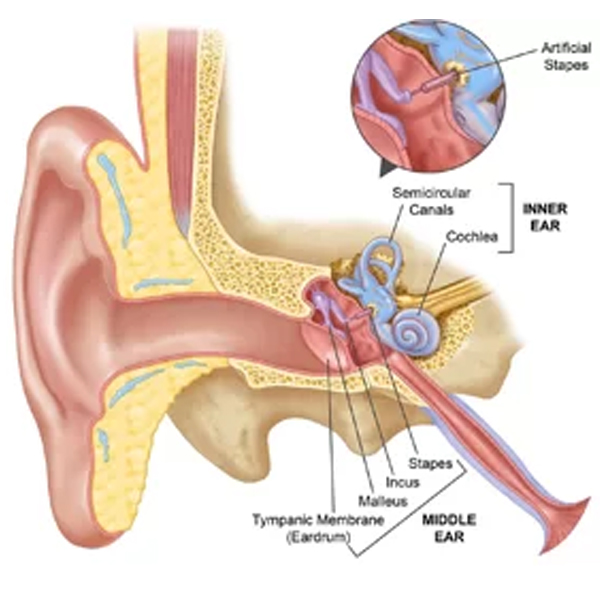Hearing loss due to otosclerosis is a condition where abnormal bone growth in the middle ear prevents the stapes bone (one of the three tiny ear bones) from vibrating properly. This reduces the transmission of sound to the inner ear, leading to progressive conductive hearing loss that can affect both communication and quality of life.
Cause:
Otosclerosis typically affects the stapes bone, causing it to become fixed in place. It may be hereditary and often progresses slowly. Patients may notice symptoms such as difficulty hearing low-pitched sounds, tinnitus (ringing in the ears), or a gradual decline in hearing in one or both ears.
Solution:
Stapedectomy is a specialized microsurgical procedure designed to restore hearing by removing the fixed stapes bone and replacing it with a tiny prosthetic device. This allows sound waves to reach the inner ear effectively, significantly improving hearing.
Procedure Overview:
-
Conducted under local or general anesthesia
-
A small incision is made in the ear canal to access the middle ear
-
The immobilized stapes bone is carefully removed
-
A micro-prosthesis is inserted to restore sound transmission
-
Typically a day-care surgery with minimal recovery time
Benefits:
-
Significant and often permanent improvement in hearing
-
Relief from symptoms of conductive hearing loss and tinnitus
-
No visible scars (performed through the ear canal)
-
Restores ability to engage in conversations and daily activities
-
High success rate with long-lasting results
At our ENT center, we offer advanced diagnosis and expert stapedectomy surgery performed by experienced ENT surgeons using modern microsurgical tools. We are committed to restoring your hearing and enhancing your overall quality of life with safe, effective treatment.


